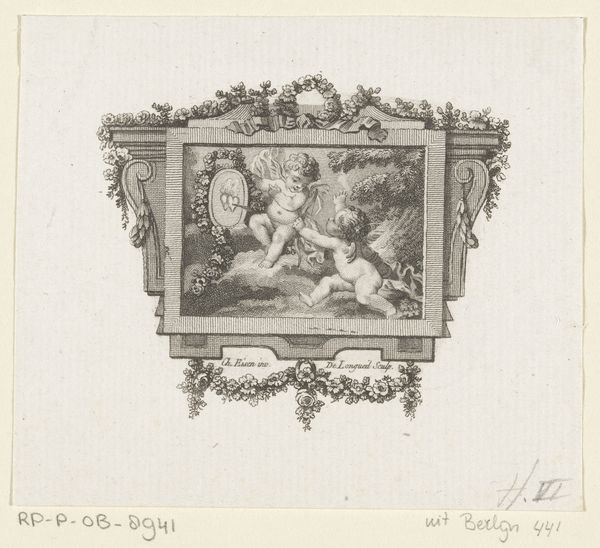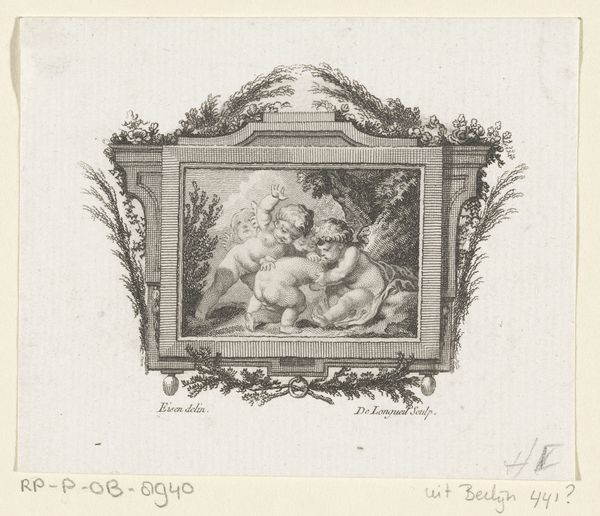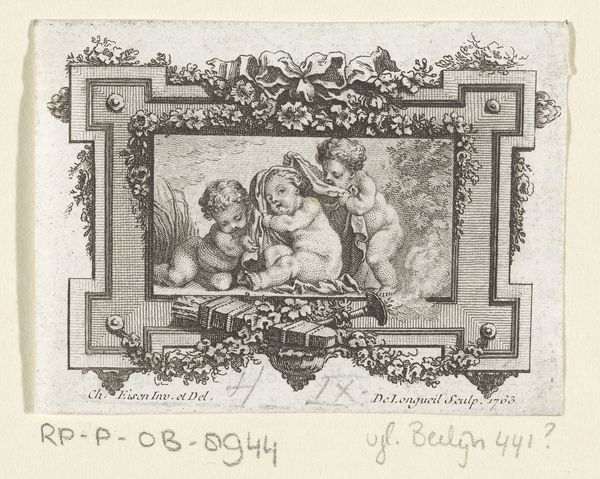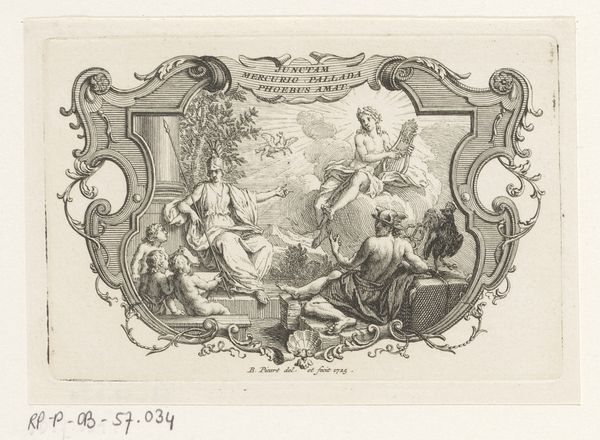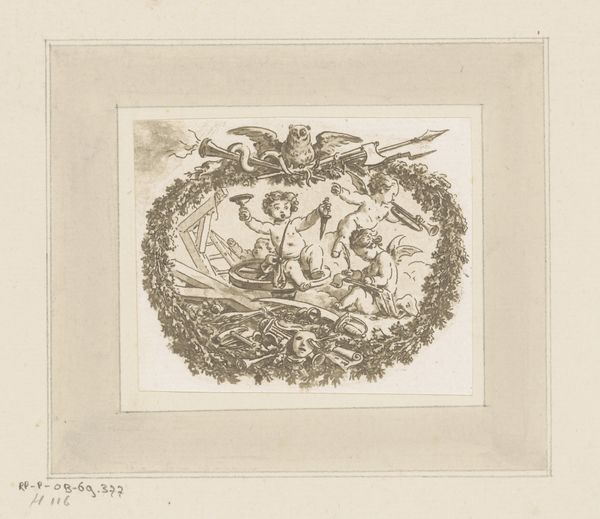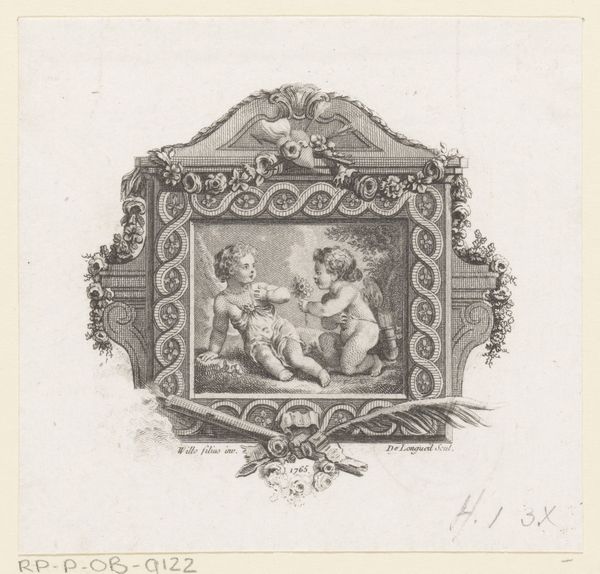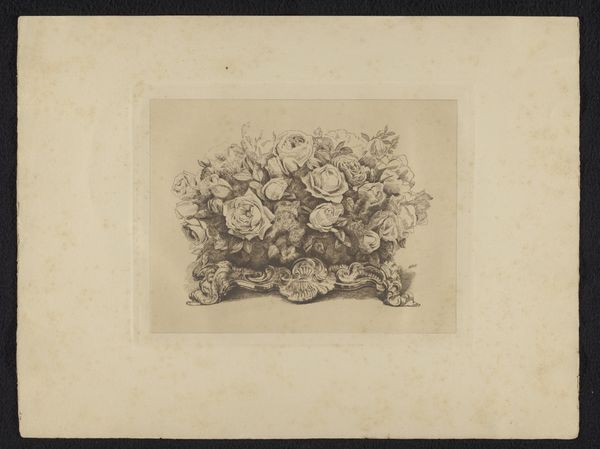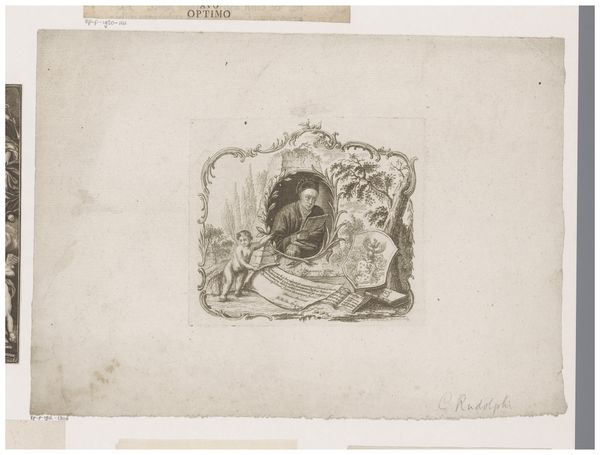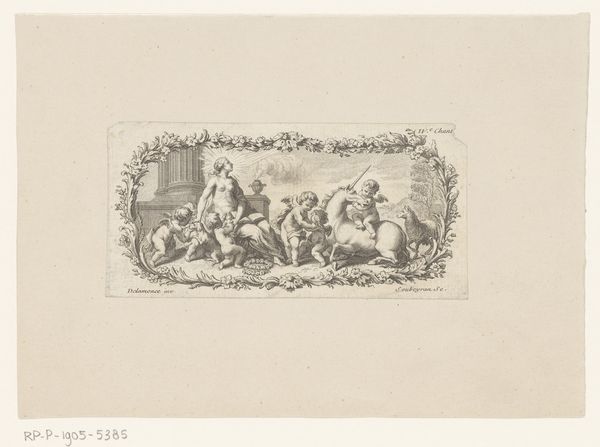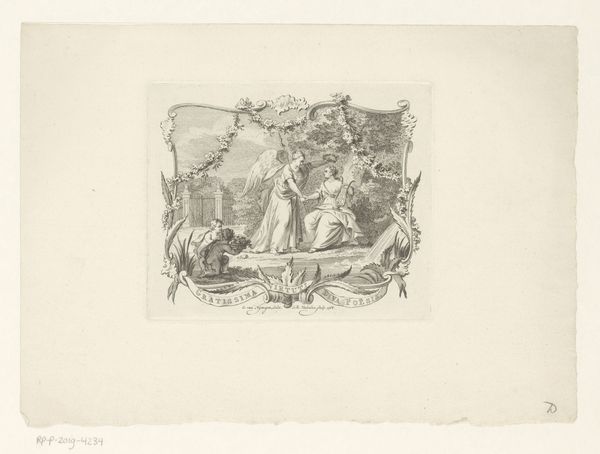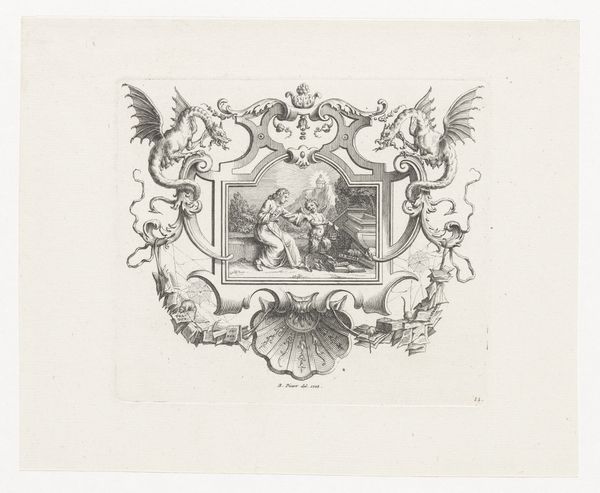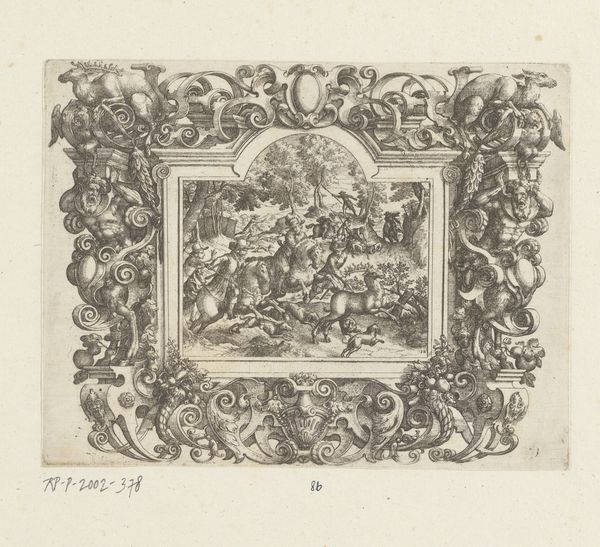
Dimensions: height 75 mm, width 97 mm
Copyright: Rijks Museum: Open Domain
Editor: This engraving, "Vignet met twee putti" from around 1763, by Joseph de Longueil, has a certain… delicacy to it. The cherubic figures are sweet, but it also feels almost mass-produced. What stands out to you in terms of how it was made, its artistic or social relevance, or, well, anything? Curator: Notice the artist’s inscription. This print speaks volumes about artistic labor and collaboration in the 18th century. Longueil, the engraver, explicitly credits "Bisen" for the initial design, and then highlights his own role. The “Sculp.” on the inscription is a reminder of his effort of carving into a copper plate. We see the division of labour inherent in printmaking – design and execution. Editor: So it wasn't all down to one "genius" artist? It's almost like a factory production line! Curator: Precisely! Printmaking democratized imagery. Multiple hands touched this object – from the designer, Bisen, to Longueil himself, not to mention the potential workshops where assistants were also involved in prepping plates or even printing itself. Each contributing labor to facilitate widespread dissemination and cultural influence. Editor: That really shifts my perception! What are those fruit and ribbon elements, then – merely ornamental? Curator: Consider these additions in light of commodity culture. Ribbon and floral embellishments – they were all saleable goods and are represented as being readily and cleanly “printed”. The seemingly innocent vignette promotes the abundance and accessibility of consumable delights and material aspirations that captivated Baroque society. It highlights consumer desire and manufactured charm. What else did you see? Editor: Initially, just cherubs! But you have changed how I see it. I now view the image in light of production, labour, the commodification of images. It isn't solely an isolated ‘artwork’ any longer! Curator: Indeed! Material analysis opens paths toward social understanding. This isn't merely "art"; it's evidence.
Comments
No comments
Be the first to comment and join the conversation on the ultimate creative platform.
